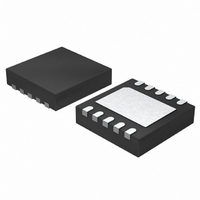LTC2484CDD#PBF Linear Technology, LTC2484CDD#PBF Datasheet - Page 34

LTC2484CDD#PBF
Manufacturer Part Number
LTC2484CDD#PBF
Description
IC ADC 24BIT 10-DFN
Manufacturer
Linear Technology
Datasheet
1.LTC2484CDDTRPBF.pdf
(42 pages)
Specifications of LTC2484CDD#PBF
Number Of Bits
24
Sampling Rate (per Second)
6.8
Data Interface
MICROWIRE™, Serial, SPI™
Number Of Converters
1
Power Dissipation (max)
480µW
Voltage Supply Source
Single Supply
Operating Temperature
0°C ~ 70°C
Mounting Type
Surface Mount
Package / Case
10-WFDFN Exposed Pad
Number Of Elements
1
Resolution
24Bit
Architecture
Delta-Sigma
Sample Rate
0.0075KSPS
Input Polarity
Bipolar
Input Type
Voltage
Rated Input Volt
±2.75V
Differential Input
Yes
Power Supply Requirement
Single
Single Supply Voltage (typ)
3.3/5V
Single Supply Voltage (min)
2.7V
Single Supply Voltage (max)
5.5V
Dual Supply Voltage (typ)
Not RequiredV
Dual Supply Voltage (min)
Not RequiredV
Dual Supply Voltage (max)
Not RequiredV
Integral Nonlinearity Error
10ppm of Vref
Operating Temp Range
0C to 70C
Operating Temperature Classification
Commercial
Mounting
Surface Mount
Pin Count
10
Package Type
DFN EP
Input Signal Type
Differential
Lead Free Status / RoHS Status
Lead free / RoHS Compliant
Available stocks
Company
Part Number
Manufacturer
Quantity
Price
LTC2484
APPLICATIONS INFORMATION
Normal Mode Rejection and Antialiasing
One of the advantages delta-sigma ADCs offer over
conventional ADCs is on-chip digital fi ltering. Combined
with a large oversampling ratio, the LTC2484 signifi cantly
simplifi es antialiasing fi lter requirements. Additionally,
the input current cancellation feature of the LTC2484 al-
lows external lowpass fi ltering without degrading the DC
performance of the device.
The SINC
mode rejection at all frequencies except DC and integer
multiples of the modulator sampling frequency (f
LTC2484’s autocalibration circuits further simplify the
antialiasing requirements by additional normal mode
signal fi ltering both in the analog and digital domain.
Independent of the operating mode, f
• f
is the maximum output data rate. In the internal oscilla-
tor mode with a 50Hz notch setting, f
50Hz/60Hz rejection, f
setting f
f
is shown in Figures 30 and 31.
34
EOSC
OUT(MAX)
/20. The performance of the normal mode rejection
S
4
= 15360Hz. In the external oscillator mode, f
digital fi lter provides greater than 120dB normal
Figure 30. Input Normal Mode Rejection,
Internal Oscillator and 50Hz Notch Mode
–100
–110
–120
where f
–10
–20
–30
–40
–50
–60
–70
–80
–90
0
0 f
DIFFERENTIAL INPUT SIGNAL FREQUENCY (Hz)
S
N
2f
is the notch frequency and f
S
3f
S
S
= 13960Hz and with a 60Hz notch
4f
S
5f
S
6f
S
7f
S
8f
S
9f
S
S
S
10f
= 256 • f
= 12800Hz, with
S
11f
2484 F30
S
12f
S
OUT(MAX)
N
= 2048
S
). The
S
=
In 1x speed mode, the regions of low rejection occurring
at integer multiples of f
Magnifi ed details of the normal mode rejection curves
are shown in Figure 32 (rejection near DC) and Figure 33
(rejection at f
frequency. These curves have been derived for the exter-
nal oscillator mode but they can be used in all operating
modes by appropriately selecting the f
The user can expect to achieve this level of performance
using the internal oscillator as it is demonstrated by
Figures 34, 35 and 36. Typical measured values of the
normal mode rejection of the LTC2484 operating with an
internal oscillator and a 60Hz notch setting are shown in
Figure 34 superimposed over the theoretical calculated
curve. Similarly, the measured normal mode rejection of
the LTC2484 for the 50Hz rejection mode and 50Hz/60Hz
rejection mode are shown in Figures 35 and 36.
As a result of these remarkable normal mode specifi ca-
tions, minimal (if any) antialias fi ltering is required in front
of the LTC2484. If passive RC components are placed in
front of the LTC2484, the input dynamic current should
Figure 31. Input Normal Mode Rejection, Internal
Oscillator and 60Hz Notch Mode of External Oscillator
–100
–110
–120
–10
–20
–30
–40
–50
–60
–70
–80
–90
0
S
0
DIFFERENTIAL INPUT SIGNAL FREQUENCY (Hz)
= 256f
f
S
2f
S
3f
N
S
S
) where f
4f
have a very narrow bandwidth.
S
5f
S
6f
S
N
7f
represents the notch
S
8f
S
N
9f
value.
2484 F31
S
10f
S
2484fc













